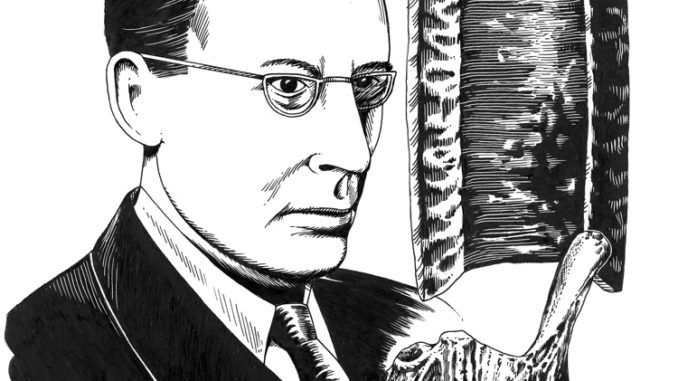
Bio Bites
By R. Gary Raham
A biologist-artist’s ruminations about our roles in a science-inspired world
We, humans, tend to leave signs of our passing, some of them monumental. Think of Stonehenge, a 5,000-year-old+ monument to repeating celestial events and the mysteries of the night sky. Egyptian rulers marshaled the creative and engineering talents of their civilization to erect elaborate pyramidal tombs flaunting pharaonic majesty. Loren Eiseley, a writer I have always admired, proposed in the 1960s that twentieth-century America created an “invisible pyramid” with all the money and resources poured into the effort to land a man on the moon. What monuments are we building in the 21st century? Could we consciously build a monument that would not only reflect our wealth and power, but also our wisdom? Perhaps something that might ensure humans will prevail into a distant future.
The Long Now Foundation believes they are building such a monument: A clock that will function for 10,000 years, ticking away the centuries in such a way that those who confront the clock will gain a sense of our place in time, and humble us enough to take care of the future. (http://longnow.org/clock/)
Loren Eiseley was born in 1907 in Nebraska. When Halley’s comet passed overhead in 1911, Loren’s father put his son on his shoulder and pointed to the slash of white in the sky. “You will see it again,” he said. “It will come back in seventy-five years. It will turn back. It is running, glittering through millions of miles.” The event became a flashbulb memory for Eiseley. He imagined the comet returning again and again over the entire course of human history, like a celestial metronome. “At the age of four,” he wrote in his essay “The Star Dragon,” “I was fixed with the compulsive vertigo of vast distance and even more endless time.”
Is compulsive vertigo a good thing to have? Perhaps so, if it provides a scale with which to measure human achievements—and potentially fatal human blunders.
It took over 200,000 years for human beings to reach a population of 1 billion. It took us only 200 years to expand to 7.7 billion. Just eating, breathing, and passing gas we challenge the capacity of Mother Earth to support us. The living infrastructure that sustains Earth’s recycling capacity developed over periods of time we can only describe as endless because we lack the capacity to imagine such time intervals—unless we trick ourselves into gaining a new perspective.
The Clock of the Long Now may provide that comprehensive view. It’s under construction inside a mountain in Texas. It will rise hundreds of feet within its cocoon of rock. The clock will chime periodically with unique melodies—tunes that will not repeat for 10,000 years—approximately the same length of time it has taken human beings to develop agriculture and grow a civilization that now consumes more than half the solar energy trapped by green plants, sustaining the biosphere on which we all depend.
Would you take a pilgrimage to see such a clock? Would it fill you with the “compulsive vertigo of endless time” necessary to imagine a sustainable future for human beings?
The clock’s builders sincerely hope so.
More information about the clock is available at http://www.10000yearclock.net/
Learn more about Loren Eiseley and his work at https://www.eiseley.org/
Support Northern Colorado Journalism
Show your support for North Forty News by helping us produce more content. It's a kind and simple gesture that will help us continue to bring more content to you.
BONUS - Donors get a link in their receipt to sign up for our once-per-week instant text messaging alert. Get your e-copy of North Forty News the moment it is released!
Click to Donate
